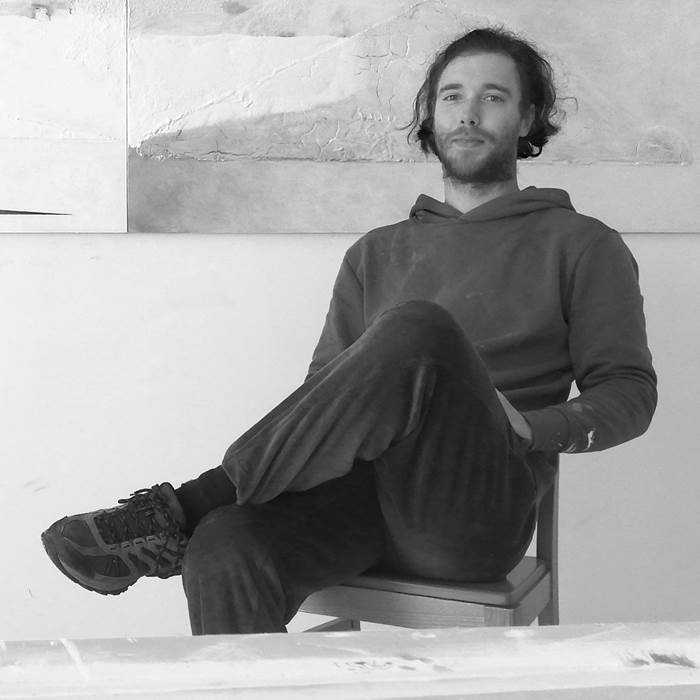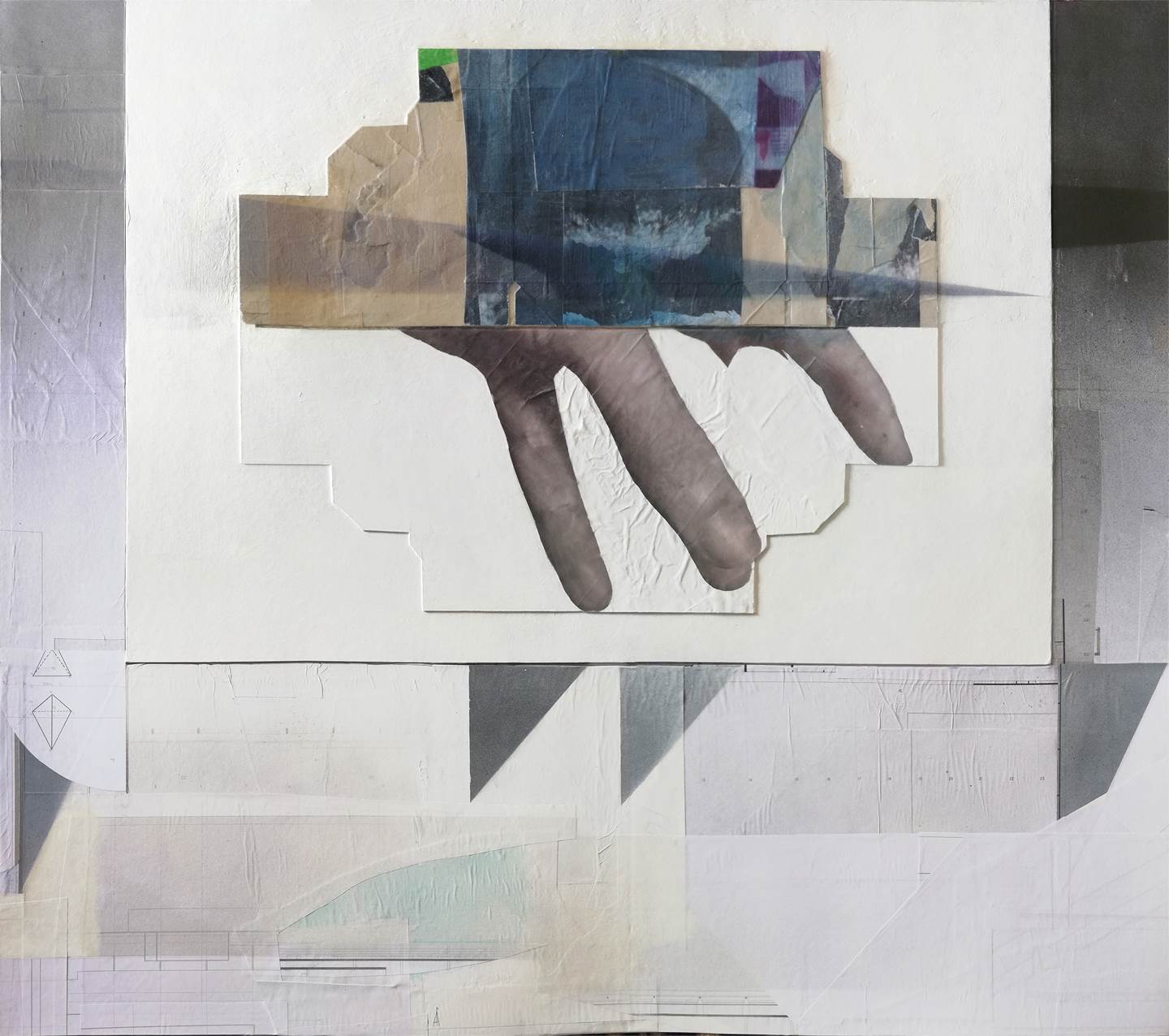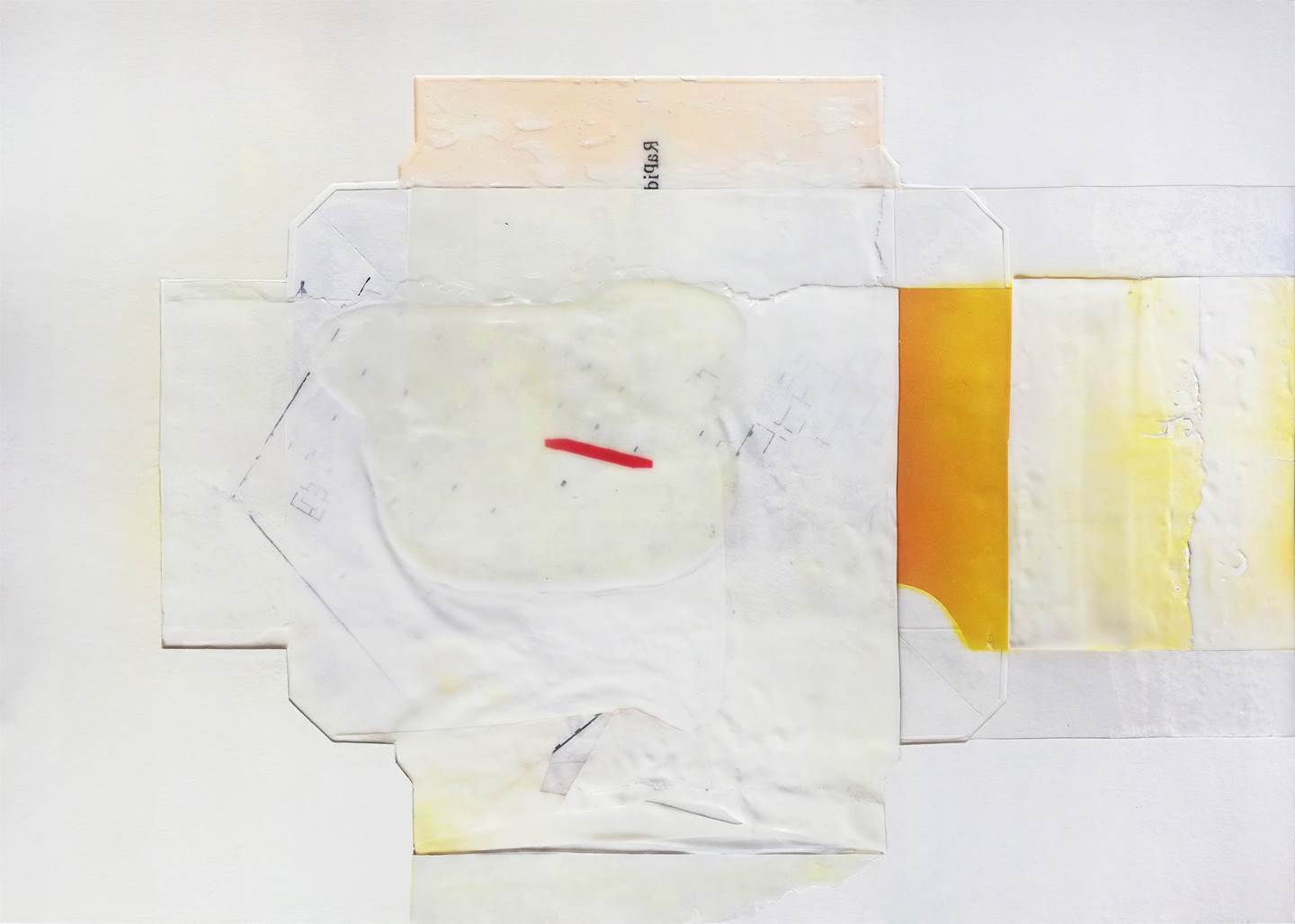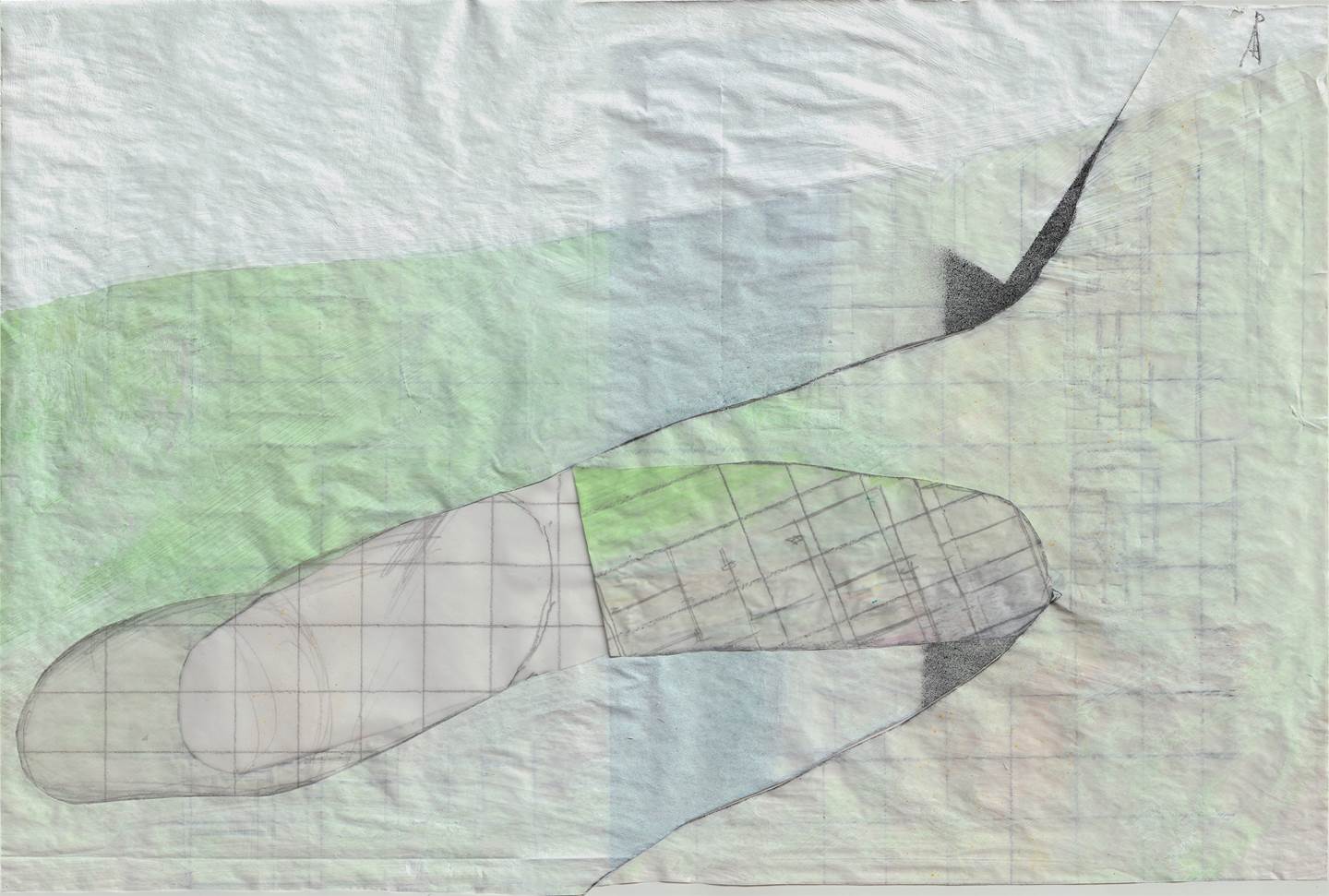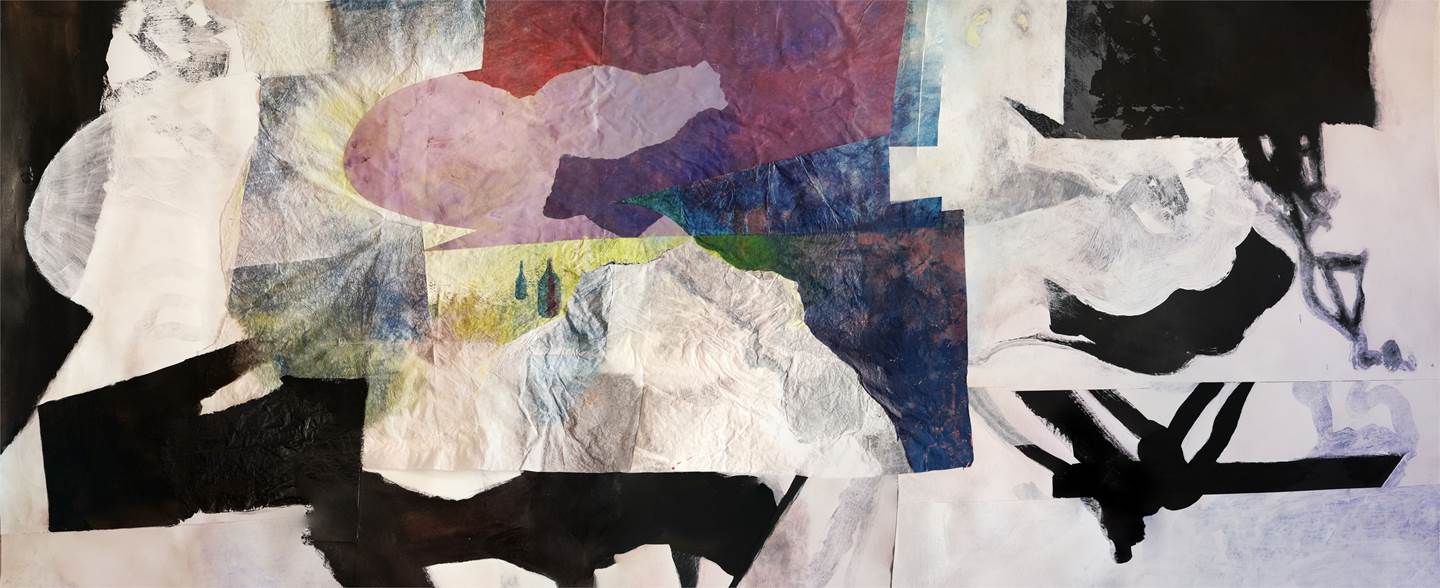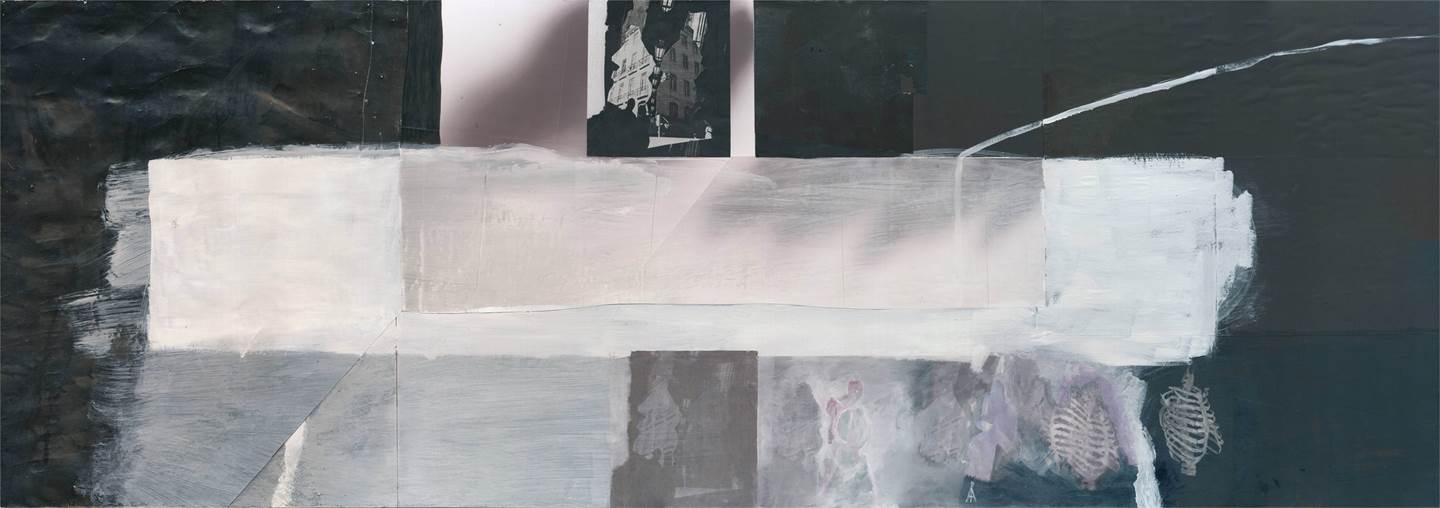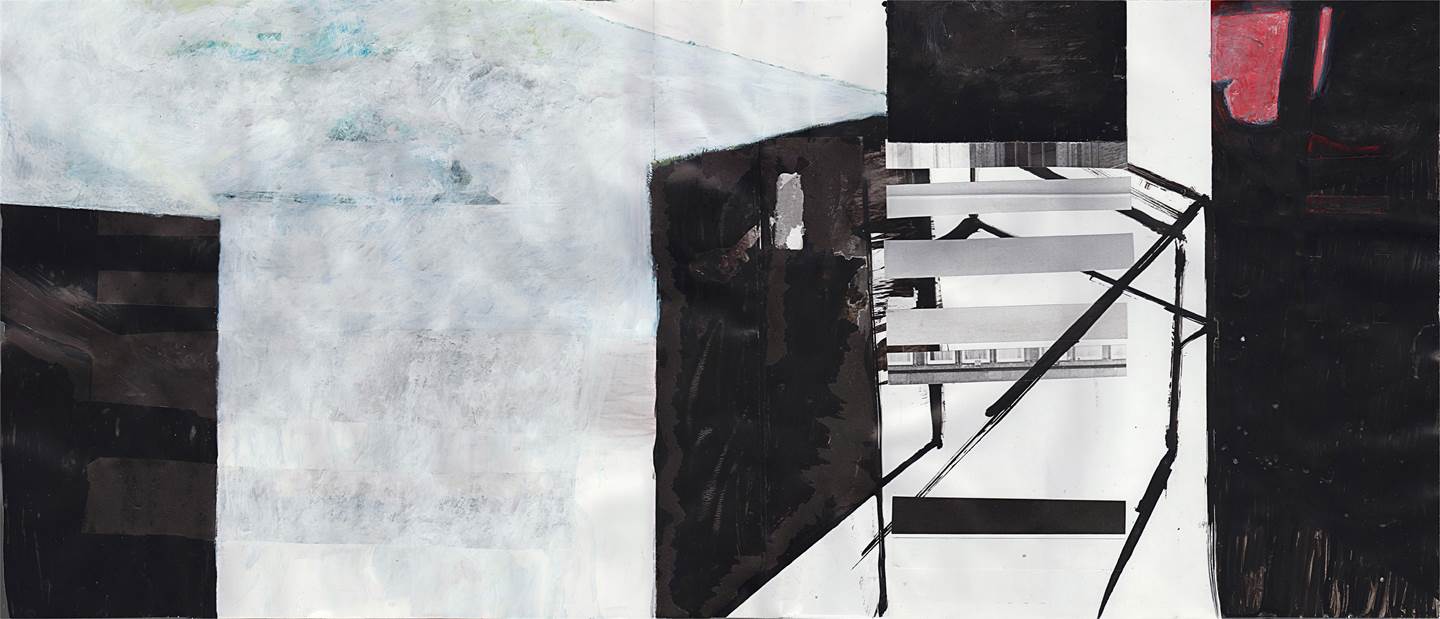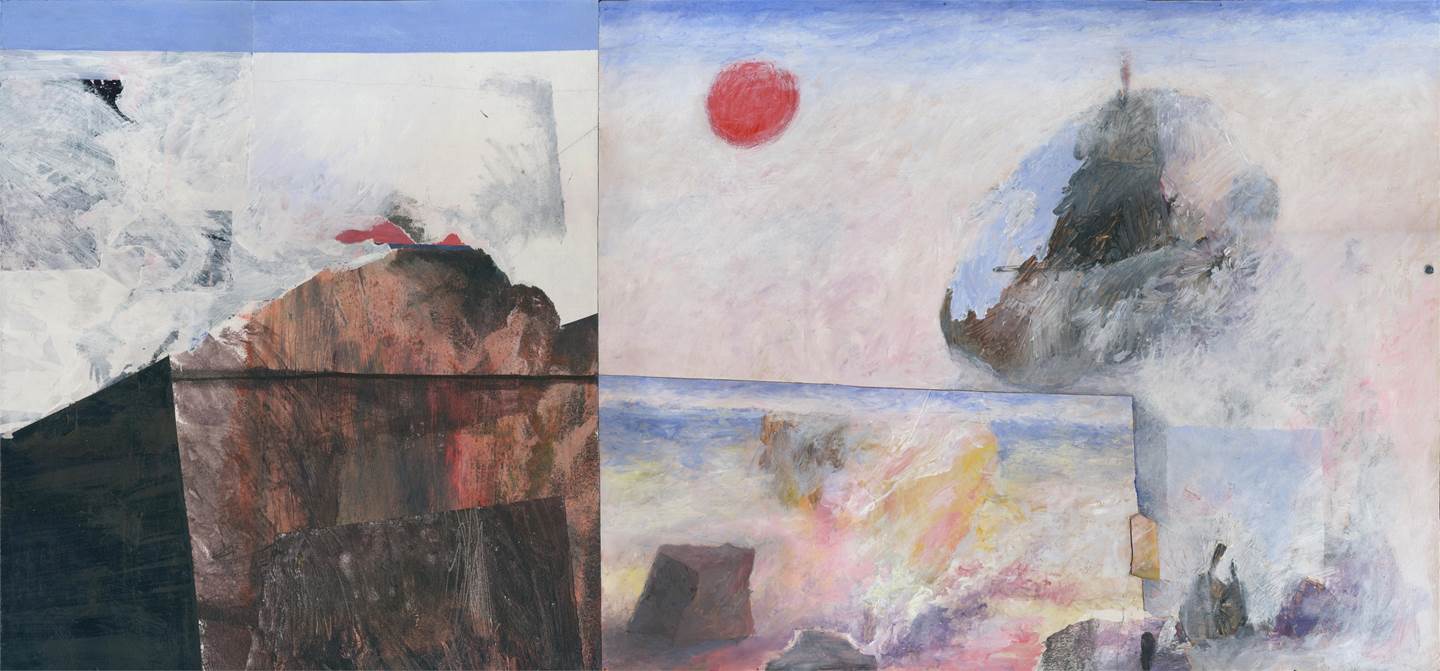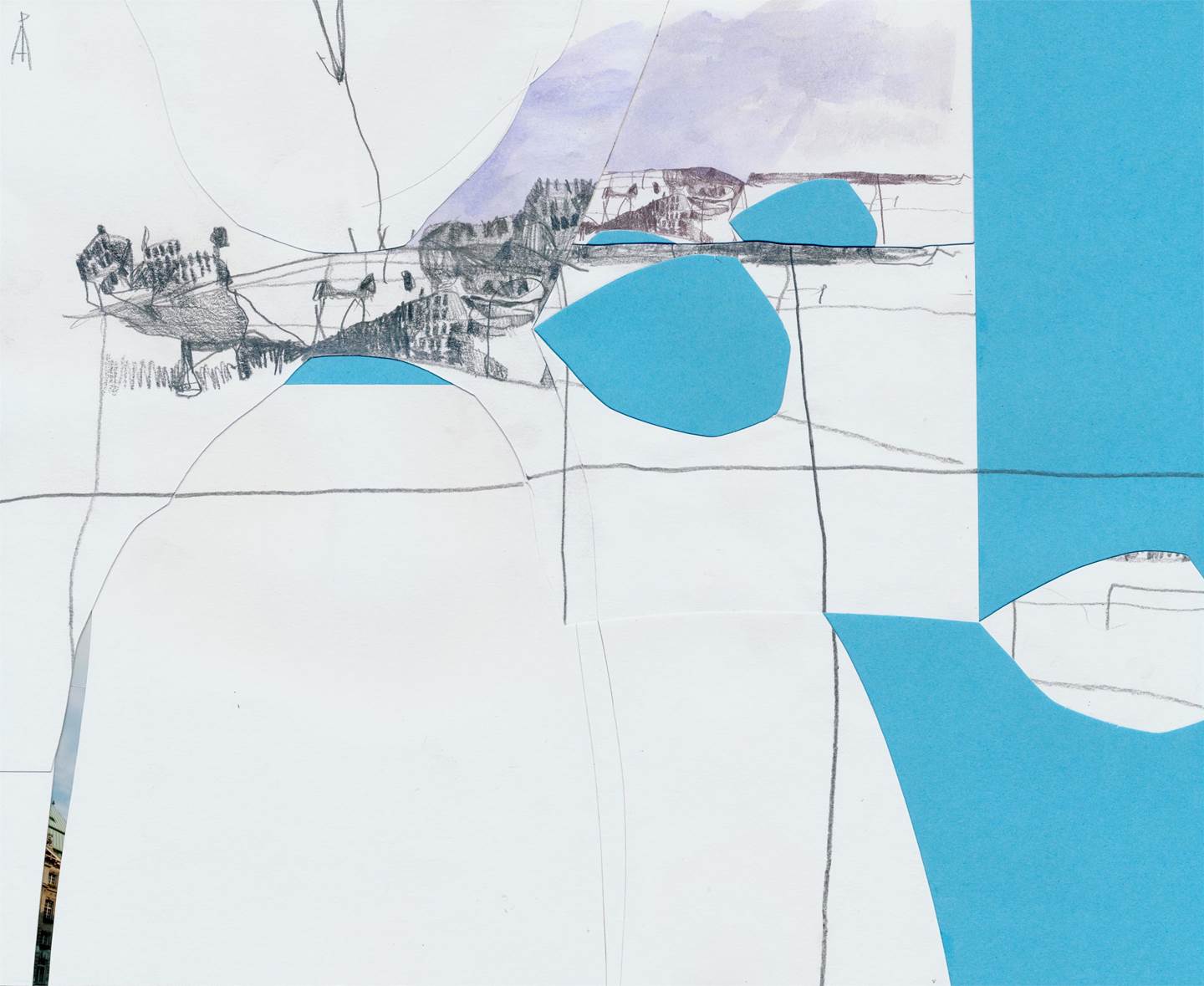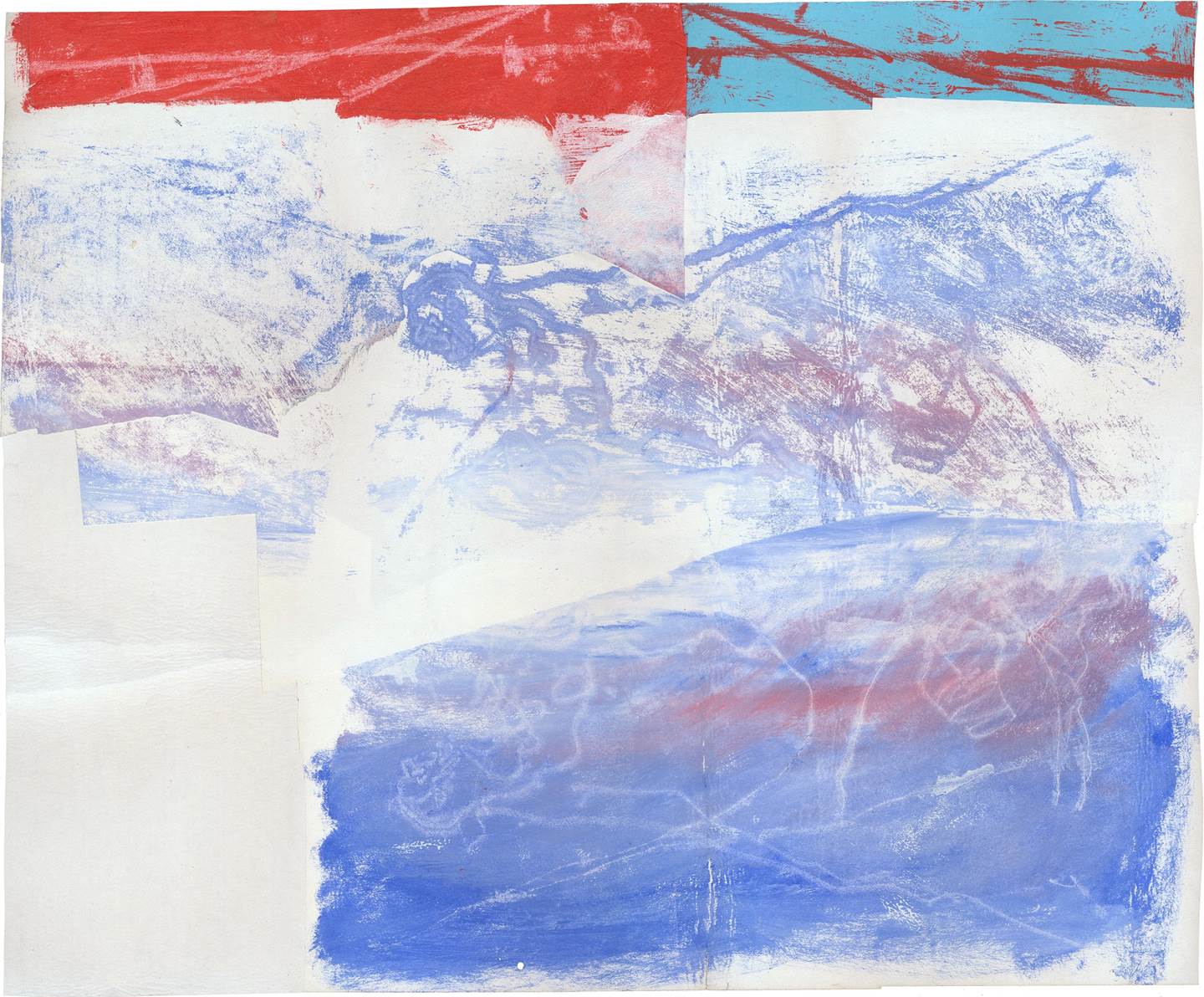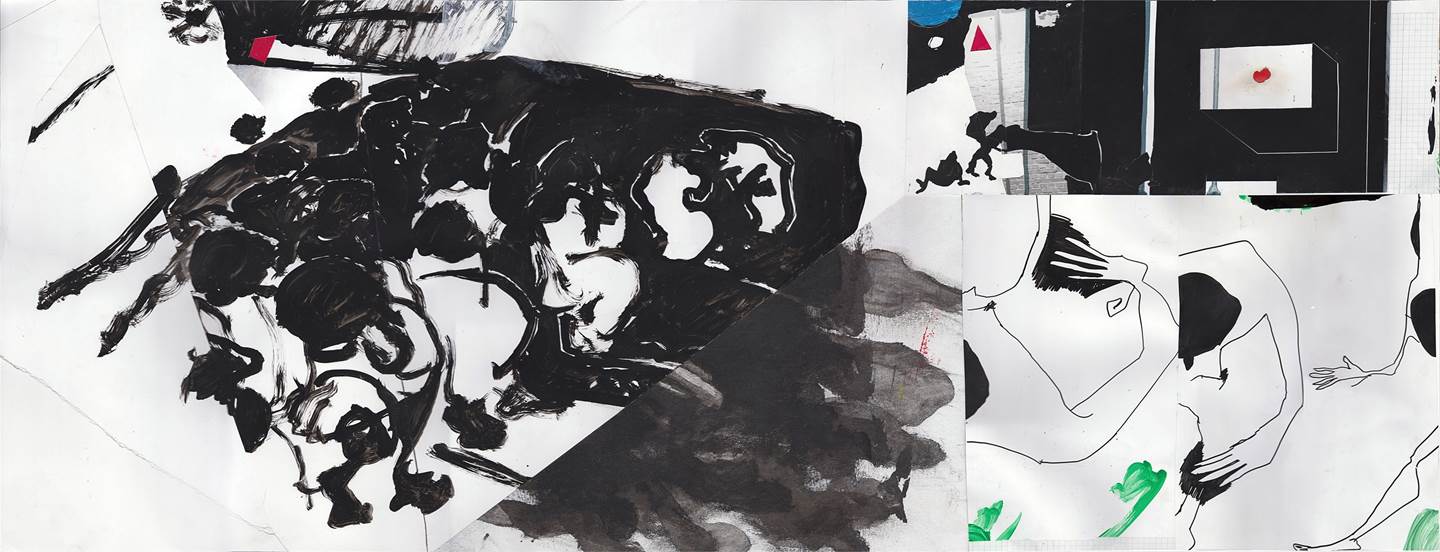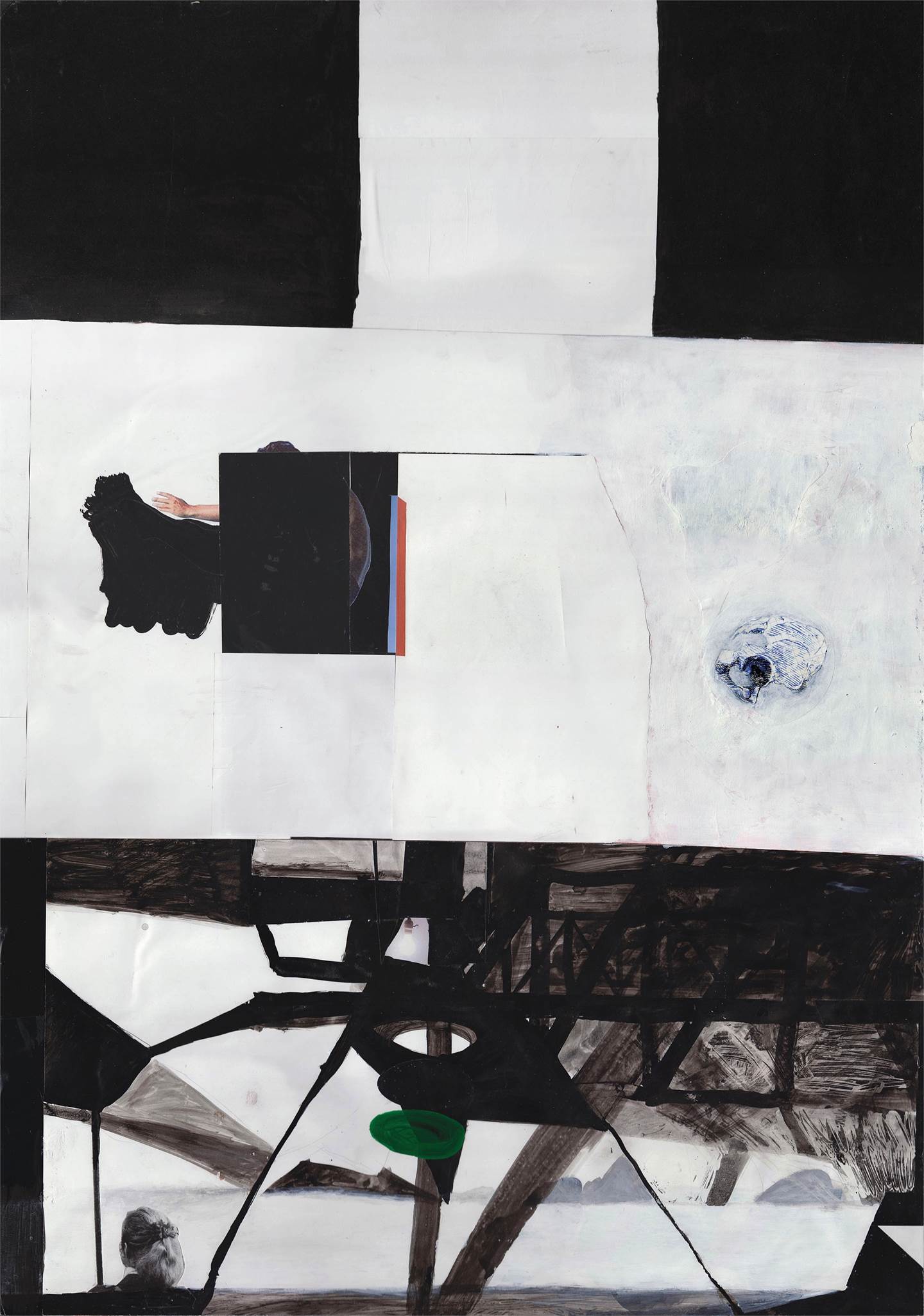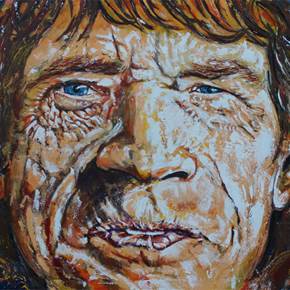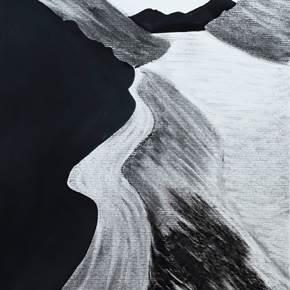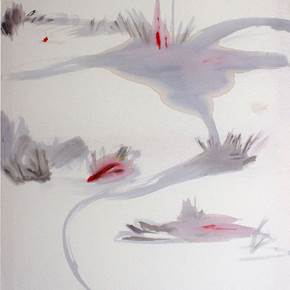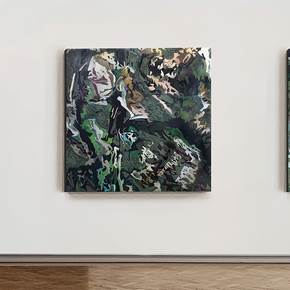A arquitetura ensinou Pedro Amaro a pintar de uma forma diferente. Em vez de se sentar em frente a um cavalete, ocom ele e com a sua mente, deambula pelo meu estúdio recolhendo informações e pistas sobre algo que poderia construir. Como numa construção, tenta encontrar uma es...
Read more
A arquitetura ensinou Pedro Amaro a pintar de uma forma diferente. Em vez de se sentar em frente a um cavalete, ocom ele e com a sua mente, deambula pelo meu estúdio recolhendo informações e pistas sobre algo que poderia construir. Como numa construção, tenta encontrar uma estrutura que una todos esses fragmentos.
O artista começa normalmente com um pedaço de papel, muitas vezes um desenho inacabado já existente ou uma colagem que tropeça. Partes de um trabalho são cortadas e adicionadas a outro. Por conseguinte, não existe um formato ou orientação original que dite quaisquer condições. Se alguma coisa está incompleta, o artista cola superfícies adicionais. Assim, o quadro cresce à medida que mais e mais elementos são acrescentados. É difícil saber o tamanho que a próxima peça vai ter. A adaptação de superfícies horizontais, no seu trabalho, fê-lo entender que os olhos percorrem melhor as superfícies e reparam melhor no encadeamento dos diferentes materiais.
